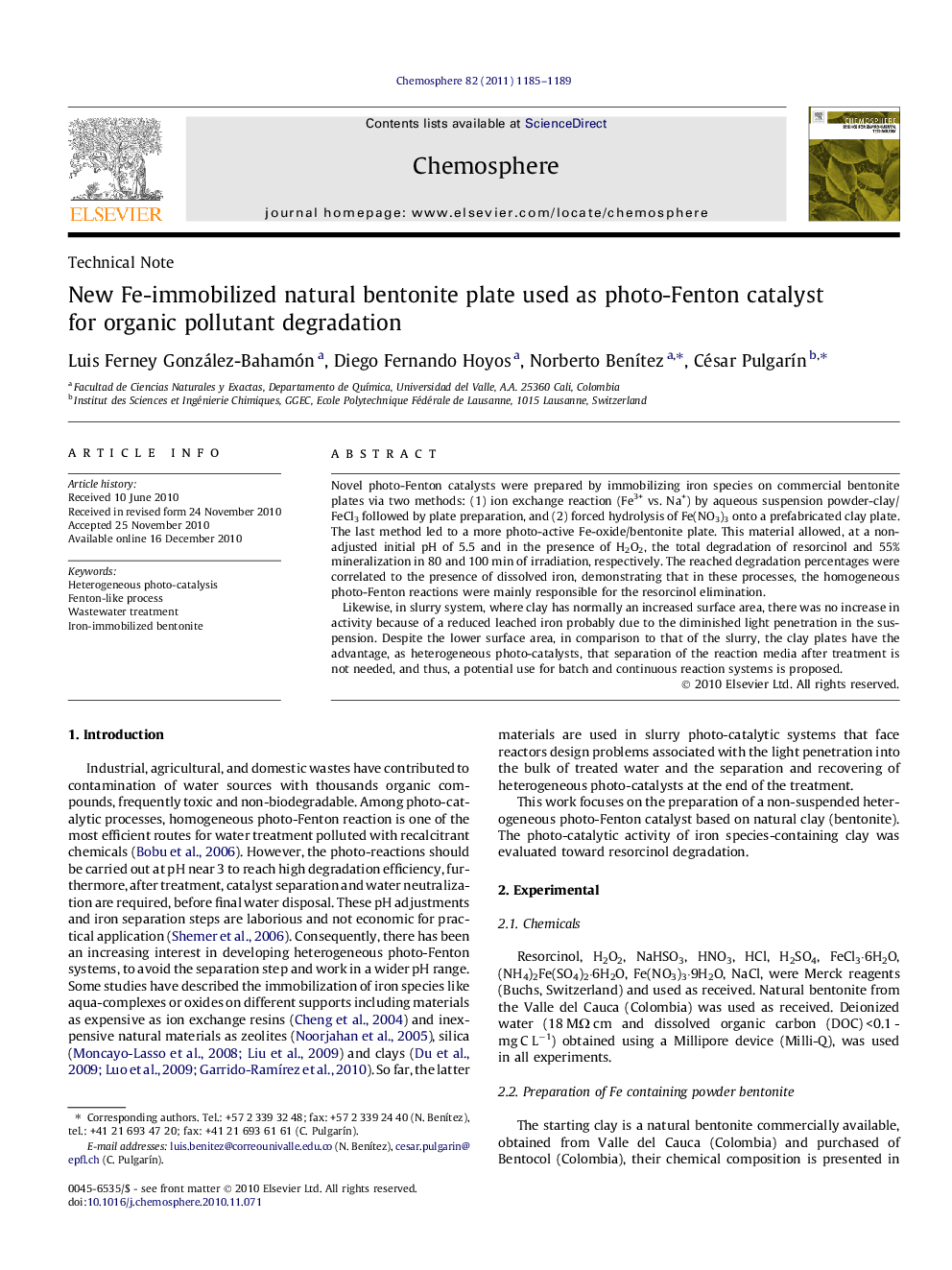| Article ID | Journal | Published Year | Pages | File Type |
|---|---|---|---|---|
| 4411409 | Chemosphere | 2011 | 5 Pages |
Novel photo-Fenton catalysts were prepared by immobilizing iron species on commercial bentonite plates via two methods: (1) ion exchange reaction (Fe3+ vs. Na+) by aqueous suspension powder-clay/FeCl3 followed by plate preparation, and (2) forced hydrolysis of Fe(NO3)3 onto a prefabricated clay plate. The last method led to a more photo-active Fe-oxide/bentonite plate. This material allowed, at a non-adjusted initial pH of 5.5 and in the presence of H2O2, the total degradation of resorcinol and 55% mineralization in 80 and 100 min of irradiation, respectively. The reached degradation percentages were correlated to the presence of dissolved iron, demonstrating that in these processes, the homogeneous photo-Fenton reactions were mainly responsible for the resorcinol elimination.Likewise, in slurry system, where clay has normally an increased surface area, there was no increase in activity because of a reduced leached iron probably due to the diminished light penetration in the suspension. Despite the lower surface area, in comparison to that of the slurry, the clay plates have the advantage, as heterogeneous photo-catalysts, that separation of the reaction media after treatment is not needed, and thus, a potential use for batch and continuous reaction systems is proposed.
Research highlights► Immobilized iron species onto bentonite plates as catalysts. ► Fe-bentonite plate is a stable catalyst for resorcinol photo-decomposition. ► The leached iron is the main cause to resorcinol photodegradation.
